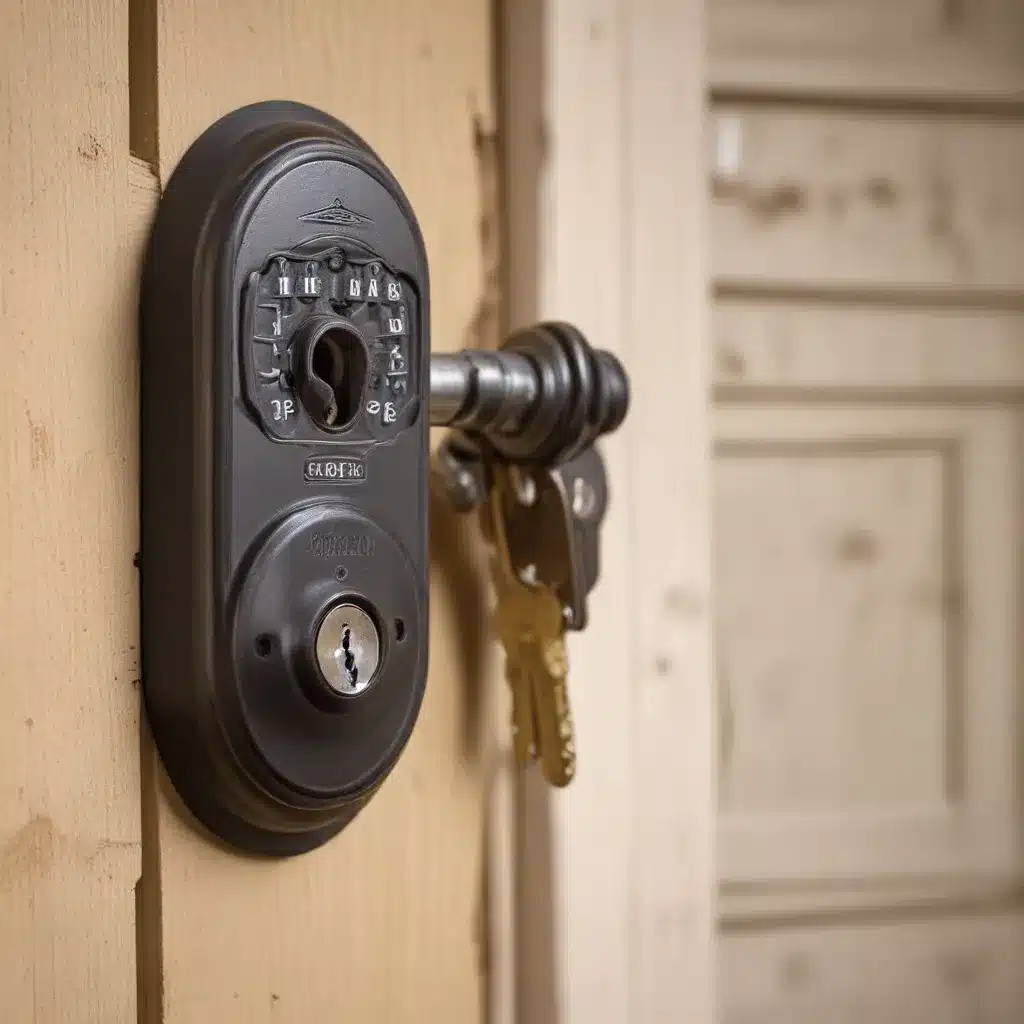
As an experienced locksmith serving the Washington, D.C. area, I’ve seen firsthand the evolving demands for home security. In this comprehensive guide, I’ll share insights on incorporating advanced locking systems to fortify your residence and provide your family with unparalleled protection.
Home Security Systems
The modern approach to securing your home goes far beyond the traditional lock and key. Today, we have a wide array of physical and electronic components that work in harmony to create a robust, multilayered defense system.
Physical Security Components
Locks are the foundation of any home security setup. While standard locks can be effective, they are no match for the sophisticated methods burglars employ. Upgrading to advanced locking systems, such as deadbolts, smart locks, and high-security locks, significantly enhances your home’s protection.
Doors and windows are the primary entry points that require careful consideration. Reinforcing these access points with sturdy, high-quality materials and proper installation techniques is crucial. Solid-core wooden doors, metal doors, and laminated glass windows can make forced entry a formidable challenge for would-be intruders.
Electronic Security Components
Alarm systems are a powerful deterrent and can provide early warning in the event of a breach. These systems integrate with sensors, motion detectors, and surveillance cameras to monitor your home’s perimeter and interior. Choosing a system that offers remote access and professional monitoring can elevate your security to new levels.
Access control measures, such as keyless entry and biometric access, add an extra layer of protection. These technologies ensure that only authorized individuals can enter your home, eliminating the risk of lost or duplicated keys.
DIY Home Security Upgrades
Enhancing your home’s security doesn’t have to be a daunting task. With the right knowledge and a bit of DIY effort, you can implement advanced locking systems that fortify your property and give you peace of mind.
Upgrade Existing Locks
One of the most cost-effective upgrades is to replace your existing locks with more robust alternatives. Deadbolts are a popular choice, as they provide superior resistance to forced entry compared to standard door locks. Smart locks, which offer keyless access and remote control capabilities, are another excellent option that seamlessly integrates with smart home automation systems.
For maximum security, consider investing in high-security locks. These are designed with advanced features, such as pick-resistant mechanisms and reinforced cylinders, to withstand even the most determined attempts at breaching.
Install New Locking Systems
If you’re starting from scratch or want to implement a comprehensive security overhaul, incorporating keyless entry and biometric access systems can significantly enhance your home’s defenses. These advanced locking systems eliminate the need for physical keys, reducing the risk of unauthorized duplication or loss.
Pairing your new locking systems with reinforced doorframes and hinges can create a formidable barrier against forced entry. Heavy-duty strike plates, longer screws, and secure anchoring into the door frame can make it significantly harder for intruders to gain access.
Advanced DIY Installation
Integrating advanced locking systems into your home may require some electrical work and connectivity considerations. Ensure you have a reliable power supply and a secure home network to support your new security features.
Wiring and Electrical Work
When installing smart locks, alarm systems, or other electronic security components, proper wiring and electrical integration are crucial. This may involve running new cables, establishing connections to your home’s power grid, and ensuring the system’s connectivity to your Wi-Fi or smart home platform.
Customization and Optimization
Optimizing the placement of sensors, cameras, and other security devices can enhance their effectiveness. Consider factors such as sensor coverage, lighting conditions, and potential blind spots to ensure your system provides comprehensive monitoring and alerts.
Familiarize yourself with the remote access and monitoring capabilities of your security system. This allows you to stay informed and in control, whether you’re at home or away, and receive timely notifications in the event of any suspicious activity.
Securing the Perimeter
While the interior of your home is the primary focus, securing the exterior is equally important. Addressing vulnerabilities along the perimeter can deter potential intruders and provide an additional layer of protection.
Exterior Doors and Windows
Reinforce your exterior doors and windows with sturdy frames, laminated glass, and strategically placed motion sensors. These measures make it significantly harder for burglars to gain access and increase the likelihood of them being detected.
Landscaping for Security
The layout and maintenance of your property’s landscaping can also contribute to your home’s security. Planting thorny shrubbery around entry points, strategically positioning lighting, and displaying signage that deters intruders can all play a role in creating a secure environment.
Maintenance and Troubleshooting
Ensuring the long-term reliability and effectiveness of your advanced locking systems requires regular maintenance and the ability to troubleshoot common issues.
Routine Inspections
Periodically check the hardware of your locking systems, ensuring proper functionality and identifying any signs of wear or damage. Keep your software up-to-date to address security vulnerabilities and take advantage of the latest features. Regular battery replacements are also essential for maintaining the uninterrupted operation of your security components.
Troubleshooting Common Issues
Even the most sophisticated security systems can experience occasional glitches or malfunctions. Be prepared to address common problems, such as power failures, sensor malfunctions, and connectivity issues. Familiarize yourself with the troubleshooting procedures outlined in your system’s user manual or consult with a local locksmith for assistance.
By implementing these advanced DIY locking systems and security measures, you can transform your home into a fortress of safety and serenity. Remember, security is an ongoing process, and staying vigilant and adaptable is key to ensuring the long-term protection of your family and your most valuable possessions.
For more information or professional assistance with your home security needs, I encourage you to visit Local Locksmith Washington DC or reach out to our team of experienced locksmiths serving the Washington, D.C. area.


